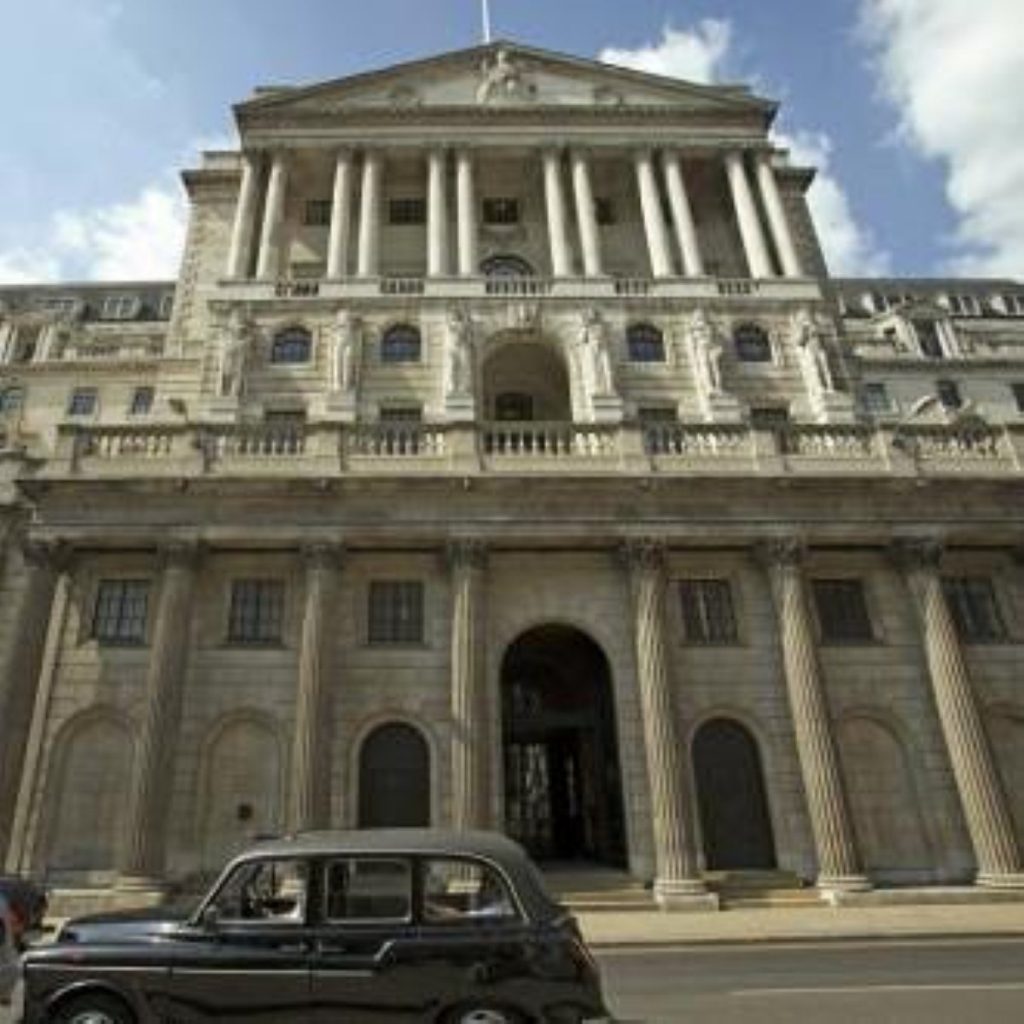Bank of England cuts rates by 1.5 per cent
The Bank of England cut interest rates today by 1.5 per cent, putting it at three per cent.
After last month’s international-coordinated 0.5 per cent cut, it means the UK’s base rate has dropped a full two points in two months.
The extent of the cut surpased all expectations, and took analysts across the City by surprise.
Both opposition parties welcomes the cut.


Shadow chancellor George Osborne said: “This is a shot in the arm for the economy, but it shows how sick the patient is.
“As we have argued, reducing interest rates is the best way to fight the recession and so we welcome the Bank of England’s decision. But the size of the cut means that the Bank recognises the UK economy is in serious trouble.”
Liberal Democrat economics spokesman Vince Cable said: “Naturally we welcome this bold move, which now amounts to a two per cent cut in rates in under a month. This is exactly what we’ve been calling for.
“It is much more radical than had been anticipated in the City, and goes a long way to restoring my faith that the Bank of England can react strongly in an emergency.
“The next priority is to ensure that this cut is passed on to borrowers.”
The monetary policy committee (MPC) has never cut by more than half a point before.
Simon Rubinsohn, Royal Institution of Chartered Surveyors (RICS) chief economist said: “This is a bold move by the Bank of England and one which RICS welcomes.
“This recognises the severity of the downturn and the squeeze on credit. This reduction in the rates should now enable lenders to pass on a significant amount of the benefit to the high street.”
It was able to cut rates as high inflation is now waning – and the rate-setters now even see a danger to the economy from deflation.
It is hoped the interest rate cut will boost the economy – and both the prime minister and the chancellor Alistair Darling have been pressuring the Bank of England to cut the cost of borrowing as the threat of a long-lasting recession looms.
Pressure is now mounting on the banks to follow the Bank of England and reduce the cost of borrowing to consumers.
Yesterday in parliament Gordon Brown said: “We want the banks and building societies to pass on the interest rate cuts to their mortgage holders.”
However, lenders have been quick to emphasise the costs they charge borrowers are linked to the London interbank offered rate (Libor) which has remained high during the credit crunch as banks have been unwilling to lend to each other.
The Council of Mortgage Lenders (CML) said: “The real cost of funds to lenders is determined not by the Bank base rate, but by their own cost of borrowing.”
The body added it did not make “commercial sense” to insist or expect that lenders automatically pass on cuts in Bank rate to borrowers until there is a reduction in funding costs.
The hope is the measures put in place by the government – to guarantee interbank lending, buy into the banks and for the Bank of England to provide short-term liquidity – would lower the cost of borrowing to small businesses and consumers.
Mr Brown claimed these actions were now starting to have effect.
“The Libor rate has gone down from 6.25 per cent to 5.25 per cent, we are starting to make progress,” he said.
Further cuts in the cost of borrowing are now expected in the coming months – with some analysts seeing the base rate dropping to unprecedented lows of one or two per cent.

